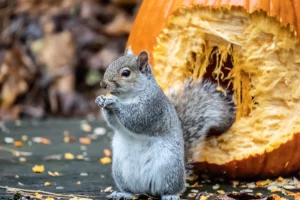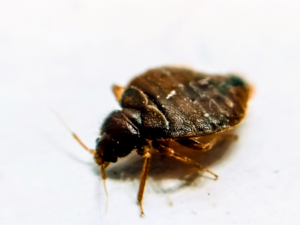Home / Blog / Restaurant Pest Control: Requirements You Need to Know
Restaurant Pest Control: Requirements You Need to Know

Scientifically reviewed by Daniel Baldwin, BCE, CCFS, CP-FS
-Published on February 3, 2023
-Updated on July 13, 2023
One of the most common things that can kill a restaurant’s reputation is the discovery of a pest problem. But your reputation isn’t the only thing to consider when it comes to pest control. Unmanaged pests can lead to fines, costly legal fees, and even a mandatory shutdown. An otherwise pleasant experience can be ruined by the sight of pests, and an ongoing problem can deflate employee morale. Keeping ahead of any impending pest issue is much easier when you know the regulations for dine-in restaurants.
This comprehensive guide covers just that, along with smart solutions for pest management and prevention.
Restaurant pest control requirements
Regulations in many countries outside the United States are fairly straightforward for pest control in the food service industry. Typically, a national governing body passes down guidelines that everyone then follows, regardless of state, province, or sector. In the United States, things get a bit more complicated.
The Food Safety Modernization Act (FSMA) includes seven fundamental regulations for food safety. However, restaurants and other food establishments aren’t covered by this act. Any existing federal law doesn’t formally cover regulatory requirements for pest control in restaurants. This can make it difficult for a restaurant owner to know where to look for the right answers regarding pest control.
Do pest control requirements vary between states?
Yes. Because the United States is a federal republic, each state has the authority to enact laws, regulations, and policies that only pertain to that individual state. Like many other industries, the intricacies of these regulations vary in each of the 50 states. Look for your state’s specific pest control regulations when creating a plan for prevention and management.
What do health inspectors look for during inspections?
Health inspectors are trained to go through a specific and extensive checklist when inspecting any restaurant. Health inspectors look for more than just pest concerns, including food safety, handling, and sanitation. While specifics can vary from state to state, below are the following areas typically inspected and how they relate to pest prevention:
- Food storage: Food should be stored in a clean, dry location that is not exposed to contamination and one that pests cannot penetrate or reach.
- Freezer and refrigerator maintenance: Freezers and refrigerators should have proper seals and locking doors to prevent pest problems.
- Food preparation: Food preparation areas should be cleaned and sanitized frequently with regulation sanitation stations set up in each prep station.
- Sanitation: Equipment, prep surfaces, and storage units should be cleaned before and after each use.
- Refuse and garbage disposal: Garbage should be properly disposed of in outside receptacles with lids. The dumpster should be kept clean and free of pests.
- Employee hygiene: Employees should wash their hands regularly, wear clean clothes, and practice good hygiene habits. An employee should not come into work if they are experiencing a pest problem at home until the situation is adequately assessed.
Why is it important to keep a restaurant pest-free?
Besides the obvious reasons for health and safety issues for customers and employees, pests can cause damage to your goods and property. Imagine throwing out hundreds of dollars of products because of pest control concerns? A pest problem can also scare away customers, even if it’s properly handled. Once the news spreads that you’ve had a pest problem, it’s hard to recover, no matter what appropriate steps you take.
What are the most common pests in restaurants?
Regardless of your region, the most common pests in restaurants are rodents. They set up in restaurants, kitchens, cafes, and other food service businesses because of the easy access to food. Cockroaches are also common pests in facilities that produce food. Cockroaches are more active at night looking for food, making them difficult to spot and manage until the problem has escalated. Flies are also common in restaurant settings. Fruit flies and drain flies are attracted to food products and can reproduce rapidly.
Signs of a pest infestation
Signs of a rodent infestation in a restaurant include small black droppings, the potent smell of ammonia produced by rodent urine, and nests made from chewed up cardboard, lint, and fabric. Cockroaches leave behind tiny eggshells that are black, brown, or dark red. You’ll also see little droppings that look like black pepper grains and may experience an intense, oily, musty odor.
With flies, you’ll likely see them flying in your establishment or see several flies gathered near your garbage cans. Catching a fly here or there does not automatically mean you have a full-blown problem, but it’s a good sign to check and put preventative measures in place.
Restaurant pest control solutions
The best way to keep your restaurant free of pests is by setting up regular preventative measures. Hawx Pest Control offers detailed restaurant pest management solutions. At Hawx, we know how important it is to have a treatment plan for pests to keep your establishment’s reputation intact and your customers safe and happy. By focusing first on existing pests and addressing the present problem, we help to nip any complications in the bud. We then create a plan for ongoing treatment, prevention, and management, working with each restaurant to address their specific needs. Let Hawx help you maintain a commercial kitchen that runs cleanly and smoothly and a dining space full of smiling guests.
Related Articles
Visit our blog to learn more.
→







